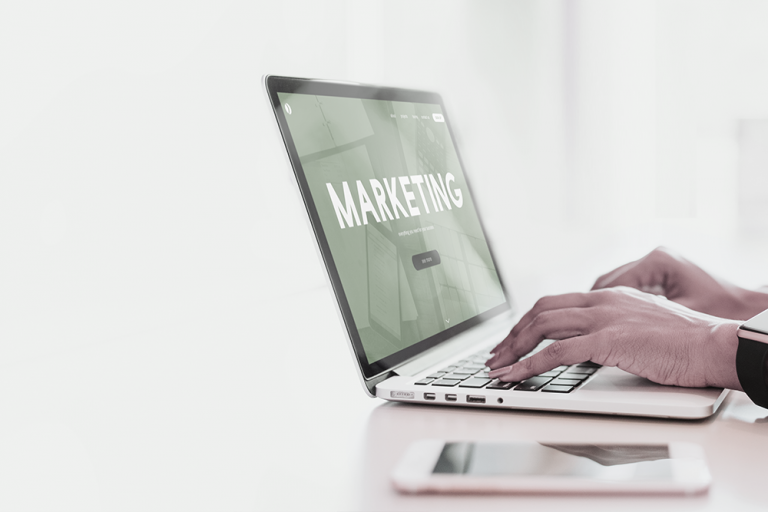Lead scoring models are essential for any business looking to increase its sales. In order to talk to the right leads, you need to have a lead scoring model in place that accurately reflects your customer’s buying stage. However, creating an efficient model is not an easy task.
That’s why we’re here to help. In today’s post, we will be discussing how you can create a lead scoring model that actually works in 2022! We will also be talking about how Covid-19 is impacting the B2B industry.
To understand why you must create a brand new lead scoring model in 2022, we first need to understand we need to have some brief information about SQLs and MQLs.
What are SQLs & MQLs?
SQLs (Sales Qualified Leads) are leads that have been qualified by sales as being worth pursuing. They meet certain criteria that have been set by the company, such as budget, authority, need, and timeline.
Meanwhile, MQLs (Marketing Qualified Leads) are leads that have been generated through marketing efforts and have met a certain threshold that has been set by the company. They may not be ready to buy yet, but they show some level of interest in the product or service that is being offered.
The main difference between the two is that SQLs have been through a vetting process by sales, while MQLs have not.
Now that we know the difference between SQLs and MQLs, let’s take a look at what are the challenges a lot of sales teams face while qualifying SQLs from MQLs
Challenges faced while qualifying leads from MQL to SQL
A lot of times, companies will generate a large number of MQLs, but a very small percentage of them will actually convert into SQLs. This can be frustrating for sales teams, as they feel like they are chasing leads that will never turn into anything.
As tough as this problem is, the covid-19 pandemic has worsened it further. Here’s what our guest speaker – Umesh Malhotra from our B2B POD show has to say on this matter:
“We always had a challenge of making sure the conversions are high from an MQL to SQL stage, ultimately converting into SQLs. But Covid has created a big problem in the lead generation world. We have a lot of spam coming in, we don’t want to spend a lot of time on MQLs that are not going to convert. Sales teams and business teams are struggling with creating a pipeline with solid opportunities. So there’s a lot of noise in other words that are interfering with our entire demand generation strategy and of course, if you remove the spam, then there are other areas that we need to touch and I guess we’ll talk about it today.“
To listen to the entire episode, tune in to B2B POD. Now available on all leading platforms!
MQLs are a crucial part of the sales process, but they can often be time-consuming and difficult to convert into SQLs. The pandemic has only made this problem worse, as now there is more spam and noise than ever before. Let’s explore some of the common problems every sales team faces with MQLs.
Problem with MQLs
The main problem with MQLs is that they are not always accurate. Just because a lead shows some level of interest, does not mean that they are actually interested in buying what you’re selling. A lot of times, leads will fill out forms or sign up for free trials just to get their hands on the product or service.
This can be extremely frustrating for sales teams, as they end up spending a lot of time pursuing leads that are not actually interested in buying.
Another problem with MQLs is that they often take a long time to convert into SQLs. A lead may show some interest today, but it could be weeks or even months before they are ready to buy. This takes up a lot of patience from sales teams, as they often have to wait a long time before they see any results.
With so many problems with MQLs, you might naturally be thinking…
Why create a sales pipeline for MQLs?
The simple answer is that MQLs are still a necessary part of the sales process. Just because they are not always accurate, does not mean that they should be ignored altogether.
MQLs are still the best way to identify potential customers and start building relationships with them. The key is to create a sales pipeline that is designed to nurture your warm leads and help them move through the sales process.
One of the best ways to do this is to use buyer intent as a qualifying approach. This means that you focus on leads that are showing signs of being ready to buy. By doing this, you can save a lot of time and energy pursuing leads that are not interested in buying.
When asked how effective buyer intent is as a qualifying approach, our guest and B2B thought leader, Umesh Malhotra, said:
“Buyer intent is a little more expensive depending on the marketing budget. I have used buyer intent as a part of my strategy and basically what it does is, you upload your company names and now the system is keeping a binocular view on which people or companies under the umbrella that you’re going after are looking for your product.
It will then tell you, hey, guess what, here are four interested companies from the accounts that you have shared. It shows you details like – these people in these job titles have downloaded or searched for these keywords on those websites. As a result, you have a lot of detail. And if you pay the cost per lead, which is on an average of about $200 per lead, it’s called a QSO which is a qualified sales opportunity. Then what it does is that that account will also give you some extra information that’s extremely useful and valuable for your teams.”
That said… Here are some recommendations that’ll help you get more conversions from MQLs
3 recommendations for better conversions from MQLs
-
Personalize your follow up messages:
According to a study, personalized emails that used the recipient’s first name in the subject line can boost open rates by 29.3%. Now that’s the power of personalization!
But that’s not all. You should also personalize your follow up messages based on the lead’s behavior. If they visited your pricing page, send them a message about pricing. If they downloaded a white paper, send them a message about the paper. The more relevant your message is, the more likely you are to convert the lead into a customer.
-
Constantly evaluate your messaging:
Your messaging should be constantly evolving based on what’s working and what’s not. Use A/B testing to try out different subject lines, call to action, and even forms to see which ones convert the most leads into customers.
Also, keep an eye out for anecdotal feedback. If your sales team is getting a lot of questions about a certain topic, it’s probably because your marketing messages are not clear enough. Make sure to address these issues in your messaging so that you can improve your conversion rate.
-
Update your lead scoring metrics:
Updating your lead scoring metrics is an important part of the process. If you’re not constantly evaluating and updating it, you’re going to miss out on a lot of potential customers.
Think about the metrics that you’re using to score leads. Are they still relevant? Do they accurately reflect the likelihood of a lead converting into a customer? If not, it’s time to make some changes.
By constantly evaluating, you can ensure that you’re always talking to the most qualified leads.
When asked about his personal recommendations for a better MQL conversion, Umesh Malhotra replied:
“I would have a 1 pager plan and would probably have highlighted it in crispy bullets, you know whose audience you’re going after? Mention that for sure. What are the qualifying questions? Run that by sales, make sure that sales have understood that, the third would be how you measure and prioritize. Then, prioritize your follow-ups. In other words, figure out who you want to talk to first and so on.”
Now that we’ve learnt so much about qualified leads, let’s take some time to understand which type of qualified leads would work well for your business.
SQL or MQL: Which one is the best?
Well, both have their own pros and cons. Here’s a quick rundown:
SQLs are great because:
– They already have a need for your product or service
– They’re more likely to convert into customers
– You can get more detailed information about them from their company’s website
MQLs are great because:
– They have good potential to become customers.
– You can get more detailed information about them from their company’s website
– They’re cheaper to acquire than SQLs
So, the answer to this question really depends on your business and what you’re trying to achieve.
This question is beautifully answered by Umesh in our latest episode of B2B POD:
” You know when you are paying $20,000 to get a great SQL, that’s for lucky companies that are only going after one or two verticals. But if you have like a dozen industries you are going after and that is 20 times a dozen, that is a pretty big budget for a quarter. Then you are struggling like oops, what do I do because I need SQLs from these 10 or 12 industries. But that is a lot of money and a marketing budget.
So then you kind of have to prioritize. OK, I want to make sure that these three industries are already so good, we are getting the revenue already so we can live off MQLs because they know who we are, we know who they are and what their pain points are. And then you use SQLs for industries that are not closing that easily, like energy for example, or some other industries that are not very good for a company.“
Before we conclude this blog post, let’s take a moment to talk about a very critical topic that is changing the B2B landscape rapidly.
The impact of covid on The B2B industry
Covid has had a profound impact on the B2B industry. It has forced companies to re-evaluate their go-to-market strategies and accelerated the shift to digital channels.
The pandemic has also changed buyer behavior, with more customers doing research online before making a purchase. This means that lead generation is more digital than ever.
Finally, the economic slowdown has put pressure on marketing budgets, making it more important to focus on generating high-quality leads that are likely to convert into customers.
If you’re looking to generate more leads in the post-covid world, we recommend you check out our latest episode of the B2B POD.
In Closing
In the end, let’s recap everything we’ve learnt in this blog post:
– SQLs are more likely to convert into customers than MQLs, but they’re also more expensive to acquire.
– MQLs have good potential to become customers, and they’re cheaper to acquire than SQLs.
– The best type of qualified lead for your business depends on your business and what you’re trying to achieve.
– The impact of covid has changed the B2B landscape, with more customers doing research online before making a purchase.
We hope you found this blog post helpful. If you have any questions, feel free to leave a comment below or reach out to us on social media.
Also, for more B2B marketing-related content, don’t forget to tune in to B2B POD. It’s available on all leading platforms like Spotify, Google podcast, Apple podcast, and Stitcher.




